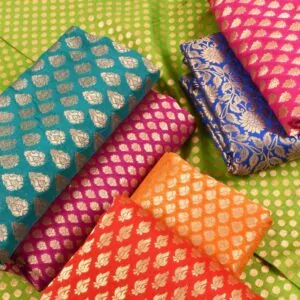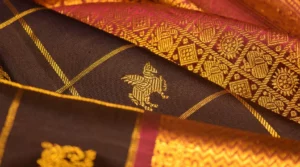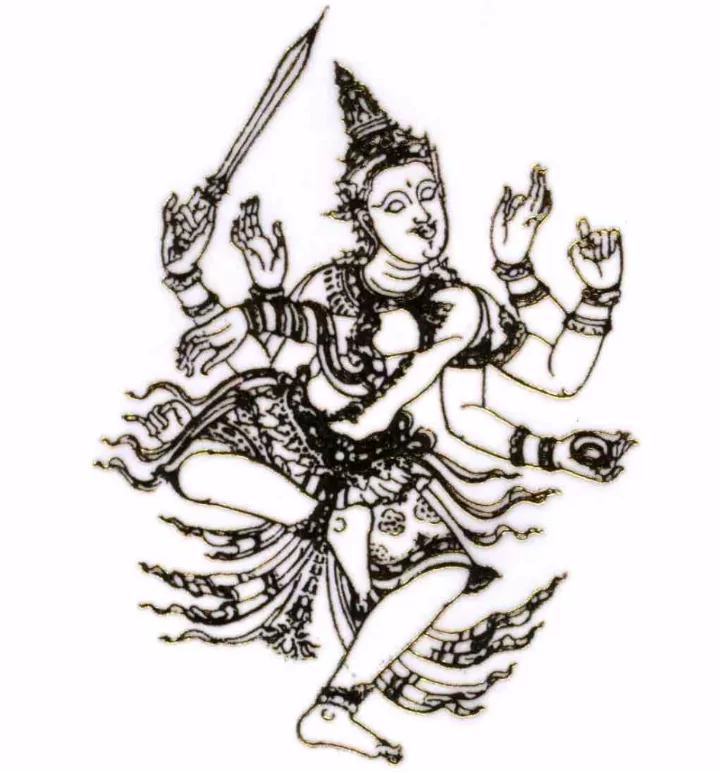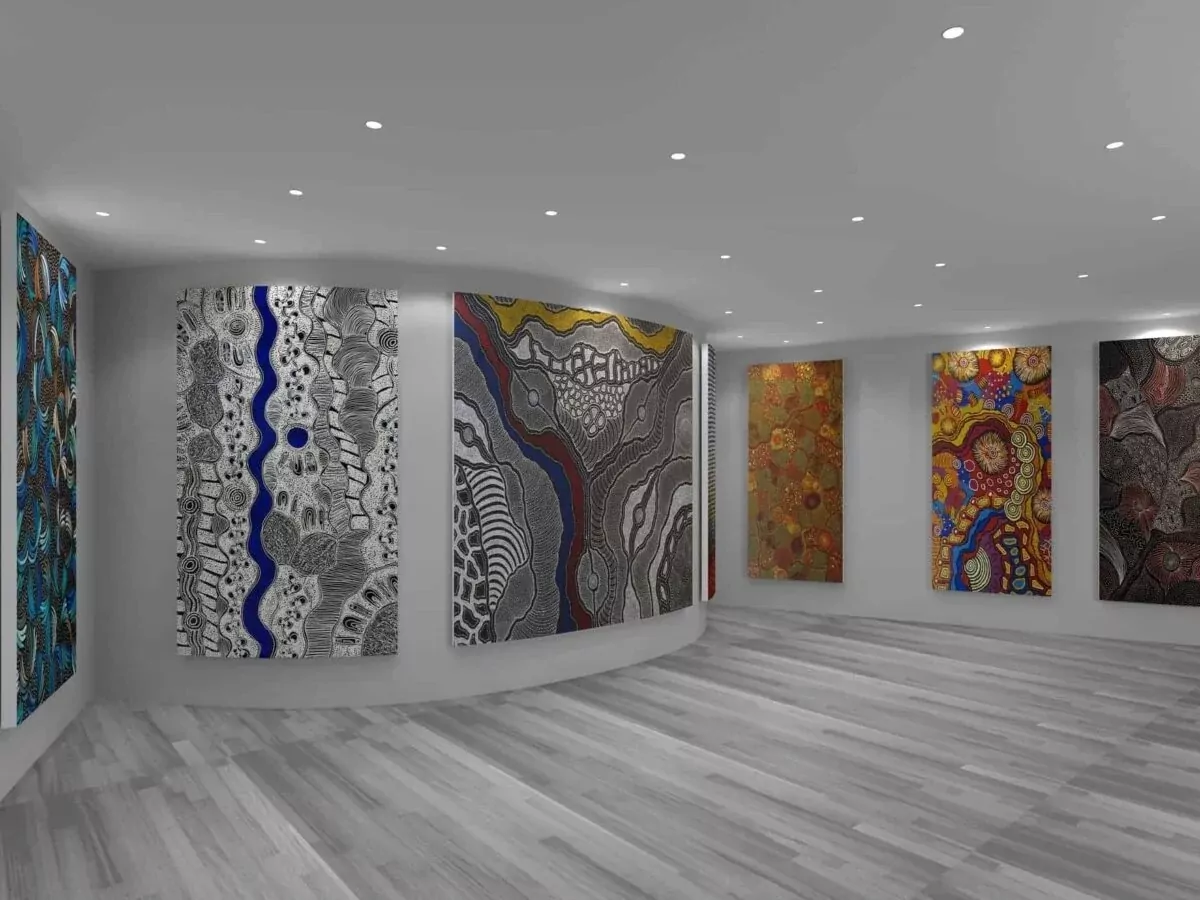India has a rich cultural heritage, and diverse history and is home to a vibrant tapestry of traditional textiles. Each region showcases its unique styles, techniques, and motifs, highlighting the incredible craftsmanship passed down through generations. This blog explores India’s traditional textiles, their significance, and the stories woven into each piece.
The Essence of Indian Textiles
Textiles in India are not merely fabrics; they are a reflection of the country’s history, culture, and artistic expression. From intricate silk weaves to bold cotton colors, Indian textiles has a stories. Textile often reflects regional identities and customs, making them an integral part of India’s cultural landscape.

Sari: A Timeless Icon
The sari, a garment that elegantly drapes around the body, is perhaps the most recognizable traditional attire in India. Each region has its distinct style of sari, enriched with unique weaving techniques and patterns.
Banarasi Sari: Hailing from Varanasi, these saris showcase luxurious silk and intricate brocade work, often featuring motifs inspired by nature and Mughal architecture. They are a popular choice for weddings and special occasions.
Banarasi Material (Image source: avishya )
Kanjivaram Sari: Originating from Tamil Nadu, Kanjivaram saris feature vibrant colors and heavy silk. Each sari typically showcases a contrasting border and pallu (the end of the sari that drapes over the shoulder).
Kanchipuram Silk Saree Motifs And Patterns (Image source: Singhanias)
Leheriya: This tie-dye technique from Rajasthan creates beautiful wave patterns, often seen in saris and turbans, making them vibrant and unique.
Faux Georgette Multi Colour Leheriya Saree (Image source: Indiamart)
Handloom Weaves: Celebrating Artisan Craft
India’s handloom industry is one of the largest in the world, employing millions of artisans. Handwoven fabrics carry a unique charm, often showcasing the skills and creativity of the weavers.
Ikat: This resist-dyeing technique, popular in Odisha and Andhra Pradesh, involves tying and dyeing the threads before weaving them into the fabric. The resulting patterns are distinctive, often appearing blurred, which adds to their beauty.
Ikat Pattern Fabric (Image source: Pinterest )
Jamdani: A traditional weave from West Bengal, its fine quality and intricate motifs characterize Jamdani. This technique involves weaving floral patterns directly into the fabric, creating stunning visual effects.
Jamdani a fine art weave attachment on fabrics (Image source: unnatisilks)
Khadi: A symbol of India’s independence movement, Khadi represents hand-spun and handwoven cotton that promotes self-reliance and sustainability. It has gained popularity not only for its heritage but also for its eco-friendly nature.
Unique Traditional Self Pattern Pure 100% Khadi Fabric (Image source: khaddarvas)
Block Printing: Art Forms
Block printing is a traditional printing technique that involves stamping designs onto fabric using carved wooden blocks. Artists have perfected this art form over centuries, particularly in Rajasthan.

Sanganeri: block prints, known for their intricate floral and geometric patterns, typically feature vibrant colors and detailed designs on cotton fabric.
Pure Cotton Sanganeri Print Fabric, Multicolour (Image source: Indiamart )
Bagru: Another famous block printing style from Rajasthan, Bagru uses natural dyes and features earthy colours and rustic patterns, often inspired by nature.
Multicolor Soft Hand Block Paisley Bagru Print Fabric (Image source: dmaasa)
The revival of block printing has also led to a resurgence in sustainable fashion, as artisans use eco-friendly materials and techniques.
Embroidery: A Stitch in Time
Indian embroidery is incredibly diverse, with each region showcasing its unique style. The intricate needlework often reflects cultural motifs and local traditions.
Chikankari: This white-on-white embroidery from Lucknow features delicate and intricate designs. Traditionally done on lightweight fabrics like muslin, Chikankari is a favourite for summer wear.
Poala Manfredi’s book on Chikankari (Image source: marasim)
Mirror Work: Predominantly found in Gujarat and Rajasthan, this technique incorporates small mirrors into the embroidery, creating a dazzling effect. People commonly use it in traditional garments and accessories.
Embroidery and Mirror Work of Rajasthan (Image source: blogspot)
Kantha: Originating from West Bengal, Kantha is a form of embroidery that involves stitching together layers of old saris or fabric to create beautiful quilts and textiles. The designs often depict nature and rural life.
Kantha embroidery on sari (Image source: oneindiaonepeople )
Natural Dyes: The Colors of Tradition
The use of natural dyes in Indian textiles is a testament to the country’s commitment to sustainability. Artists derive these dyes from plants, minerals, and even insects, creating a rich palette of colors without the harmful effects of synthetic dyes.
Indigo Dyeing: People have used indigo for centuries in India to create deep blue textiles. The indigo dyeing process is labor-intensive and involves fermenting leaves from the indigo plant.
Indigo Dye (Image source: georgeweil)
Turmeric and Madder: Artists use these natural sources to create yellow and red hues, respectively. Both colors have historical significance and often appear in traditional garments.
Natural Dyeing: Turmeric (Image source: theeasyblues)
Regional Specialties: A Glimpse into Diversity India’s regional textiles are as varied as its geography
Pashmina from Kashmir: Renowned for their softness and warmth, artisans make Pashmina shawls from the fine wool of Changthangi goats, making them a luxurious choice for winter wear.
Le Rougé Paisley – Grand Pashmina Shawl (Image source: kashmircompany)
Mangalagiri Cotton from Andhra Pradesh: Renowned for its simplicity and durability, Mangalagiri cotton features bold stripes and serves as a staple in traditional Indian attire.
Mangalagiri Sarees and Fabrics (Image source: kamakshisg)
Tussar Silk: Artisans primarily produce Tussar silk in Jharkhand and West Bengal, valuing it for its rich texture and natural golden hue. They often use it in sarees and dupattas.
Tussar Silk Sarees(Image source: avishya)
The Importance of Sustainability
In recent years, there has been a growing awareness of sustainable practices in the textile industry. Traditional textiles, especially those who produced using handloom and natural dyeing techniques, offer an eco-friendly alternative to mass produced fabrics. Supporting local artisans not only helps preserve these crafts, but also promotes fair trade and sustainable livelihoods.
Conclusion
The traditional textiles of India are a vivid tapestry that weaves together history, culture, and artistry. Each piece carries with its legacy of skilled artisans and the stories of regions they come from. As we embrace these textiles in modern fashion and home décor, it’s essential to honor their origins and the people behind it. By supporting traditional textile practices, we not only celebrate our rich heritage but also contribute to a sustainable future. People are drawn to the elegance of a Banarasi sari or the intricate details of Chikankari embroidery, the world of Indian textiles offers something for everyone and invites you to appreciate and cherish this beautiful aspect of Indian culture.
WILCY SAMUEL






